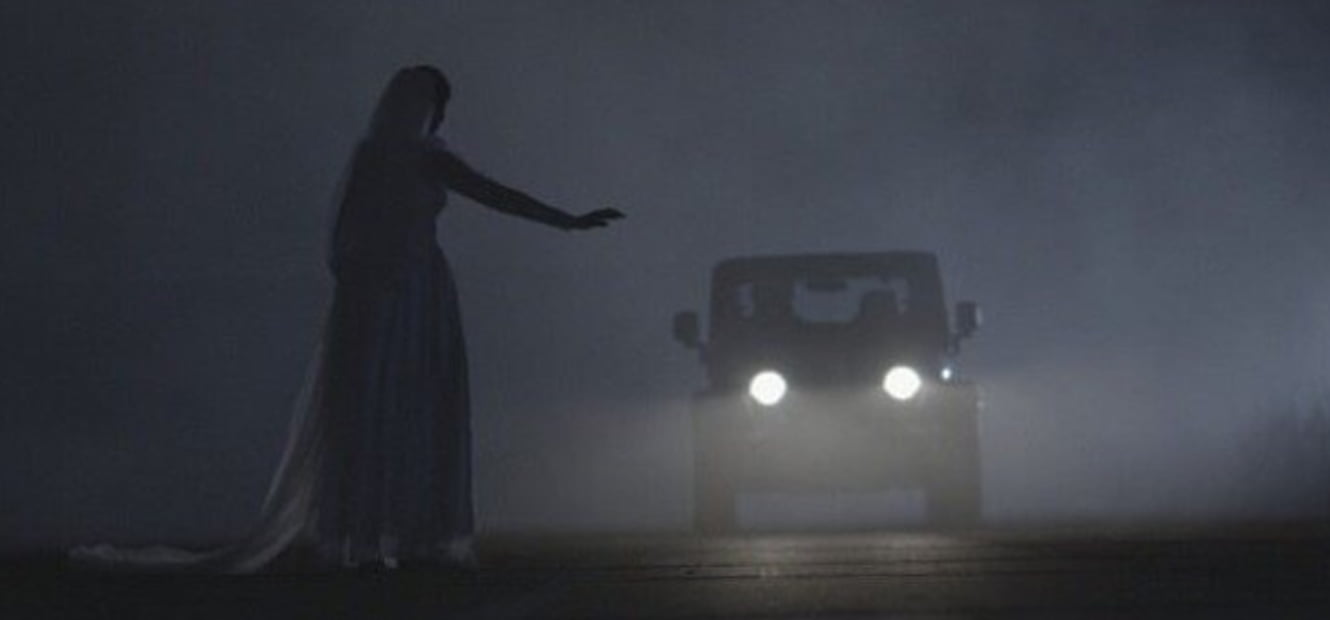You probably encountered the very idea of ‘urban legends’ thanks to the labours of Jan Harold Brunvand, retired Professor of English and eminent folklorist. He did more than anyone else to promote awareness of those short, perfectly-formed morality tales that were told as true, but whose ultimate source – a ‘friend-of-a-friend’ – was distant enough to make the story unverifiable. This urban legend story form is now well enough known that listeners may identify anecdotes as urban legends simply by their story structure.
He called his first classic volume after the most popular trope: ‘The Vanishing Hitchhiker’. Broadly: a traveller stops to pick up a hitchhiker. The hitchhiker sits in the back of the vehicle and when they reach their destination, the traveller finds that the passenger has disappeared into thin air. The hitchhiker is then identified by a person at the destination as somebody who died prematurely and whose ghost has done this many times before. There are sometimes chilling or poignant additions. In one, for example, the driver lends the (young female) hitchhiker his overcoat which he finds draped over her gravestone at their destination.
A folklorist who has spent hours reading historical accounts can’t help but notice the parallels with older stories, set well before the popularity of the automobile. I found one of a Madam Pigott of Chetwynd Hall (p 90) who died during a medically-botched childbirth. Her ghost took to riding behind people in the district on horseback at night, especially if they were on the way to collect a midwife. Her spectre disappeared whenever the horse and rider crossed running water.
Brunvand reports a variant of this tale from the US in the 1890s, where a young woman would jump on young men’s horses when they passed through a certain wood on their way to parties and then disappear when they arrived.
Other versions from the late nineteenth and early twentieth centuries place the traveller and hitchhiker in the more modern configuration of a vehicle, albeit a horse-drawn one. As you would expect, the automobile variant emerged and proliferated at the same rate as the machines themselves, to the point where most people now identify the theme exclusively with cars.

So it made me think twice when, just before Christmas, Professor Owen Davies (@odavies9) asked: “Serious folklorist’s questions. Anyone seen a phantom hitchhiker recently? Haven’t seen any physical hitchhikers for years.” Unreal Irish Folklore (@unrealpod) brought up a valid point, had “… this one became so widely known that it reached the level of literary trope (which sometimes seems to kill off the oral legend)”. Had familiarity bred disinterest?
Icy Sedgwick (@IcySedgwick) made another incisive observation: “I wonder how Uber has impacted them”.
That’s not as frivolous as it may sound. Our stories contain important themes of change and danger, they are informative… and they are relevant. They contain the themes and technology we encounter every day.
Freakonomics Radio asked ‘Where have all the hitchhikers gone?’ and concluded that lower air fares, higher earnings and higher rates of car ownership had contributed to a lower incidence of hitchhiking. In addition, movies like Tobe Hooper’s ‘Texas Chainsaw Massacre’ had made people more alert to the potential dangers.
Julian Portis in ‘Thumbs Down: America and the Decline of Hitchhiking’ agreed that media had made awareness of the dangers higher (even though the danger itself had not increased in the same time). He also pointed out that modern high-speed roads simply make hitchhiking physically more difficult.
So we may have lost one trope through over-exposure and reducing relevance. But it seems we have not lost our desire for pithy, scary stories. ‘Creepypasta’ is a type of first-person, micro-blogging, creepy urban-legend for the internet age. A 2010 New York Times’ article described it as “bite-sized bits of scariness that have joined the unending list of things-to-do-when-you’re-bored-at-work”.
Urban legends haven’t gone away. In fact they have adapted very well to the digital age. If phantom hitchhikers say something about previous eras, what do the preoccupations of our contemporaries say about us? I leave you with one: ‘Black-eyed-kids’. Popular since the ‘90s, these tales feature sinister panhandling children with pale skin and totally black eyes. They speak in monotones and sometimes try to enter houses at night under the pretext of wanting to use the phone or the bathroom.
Sleep well.
